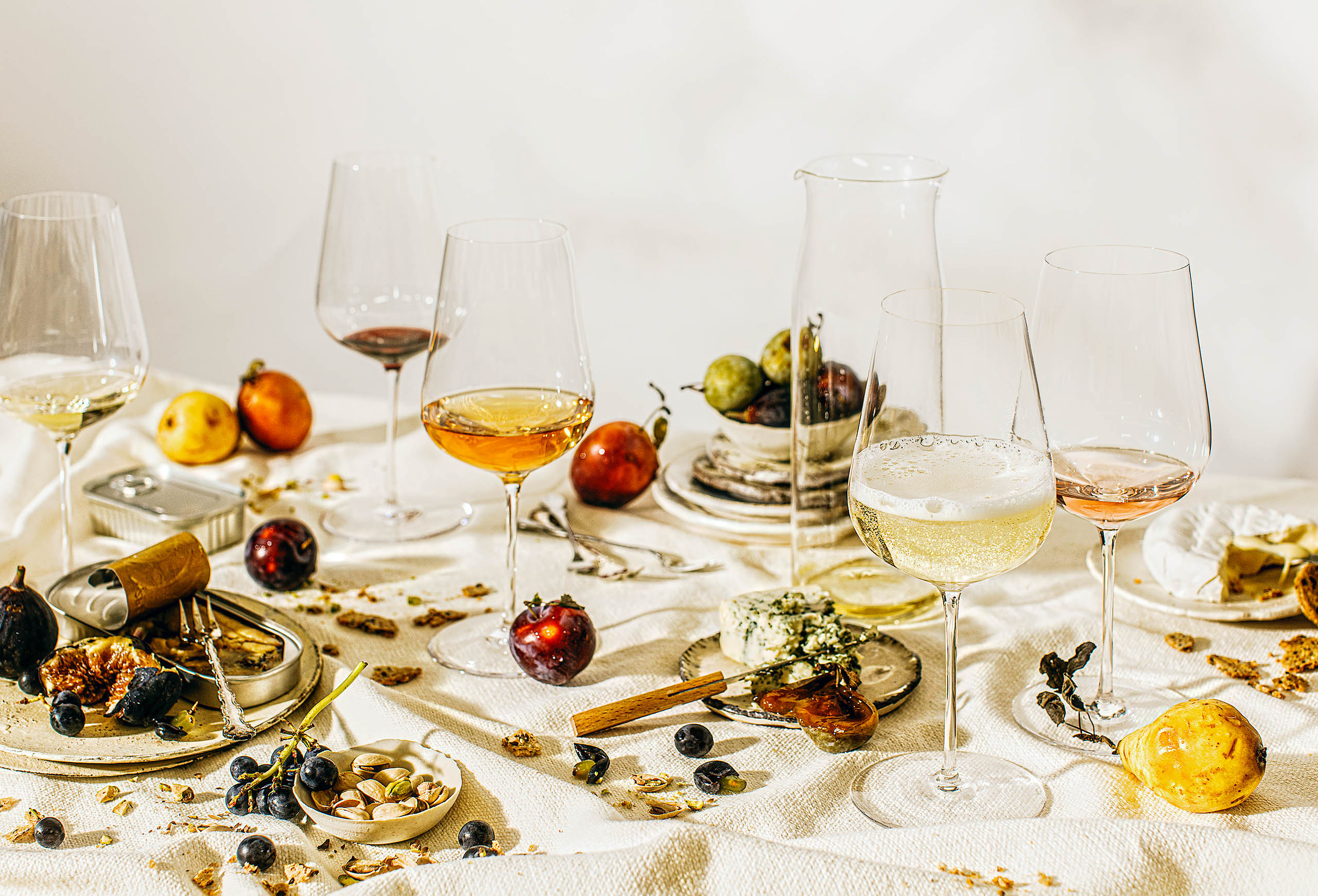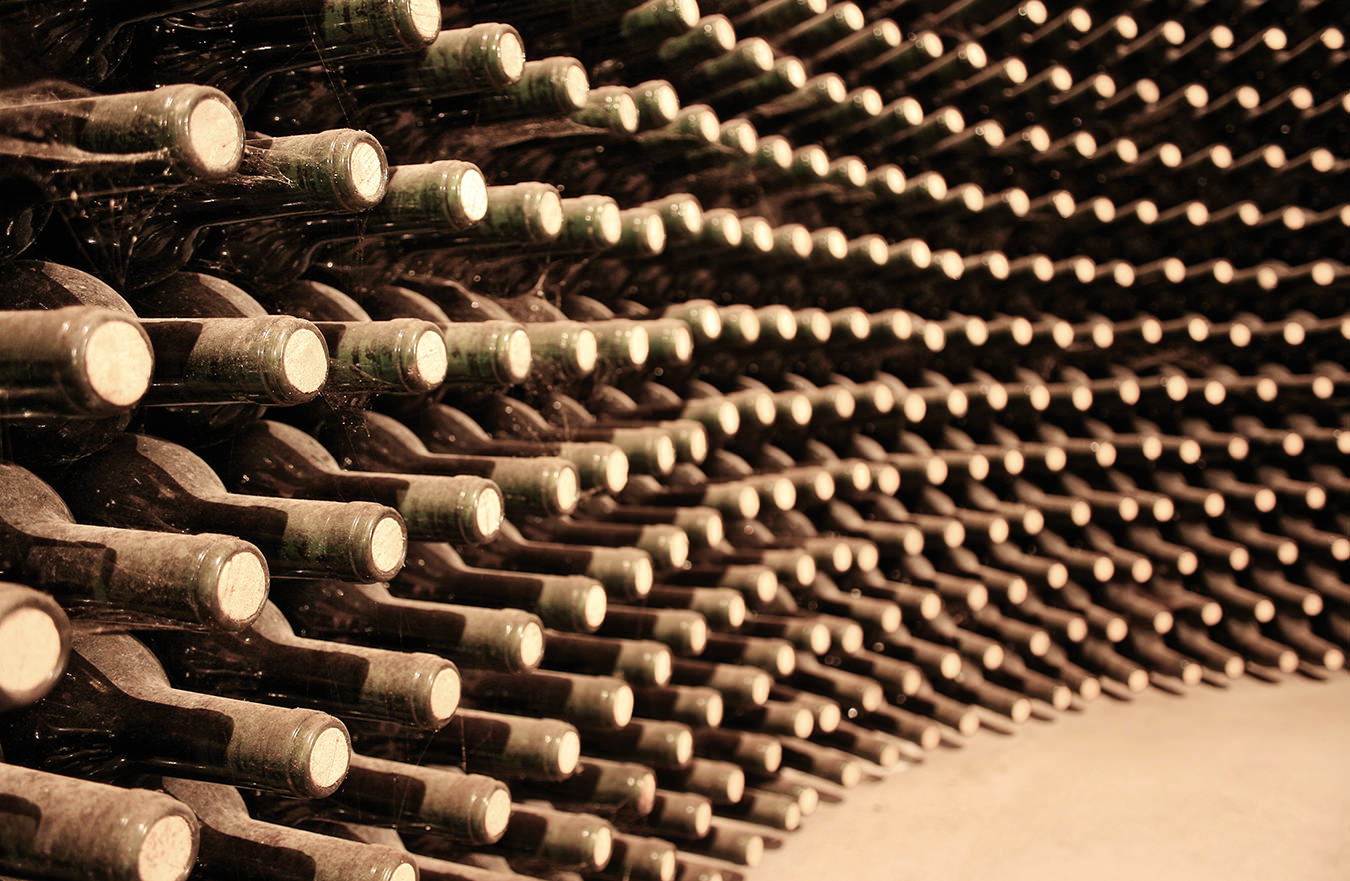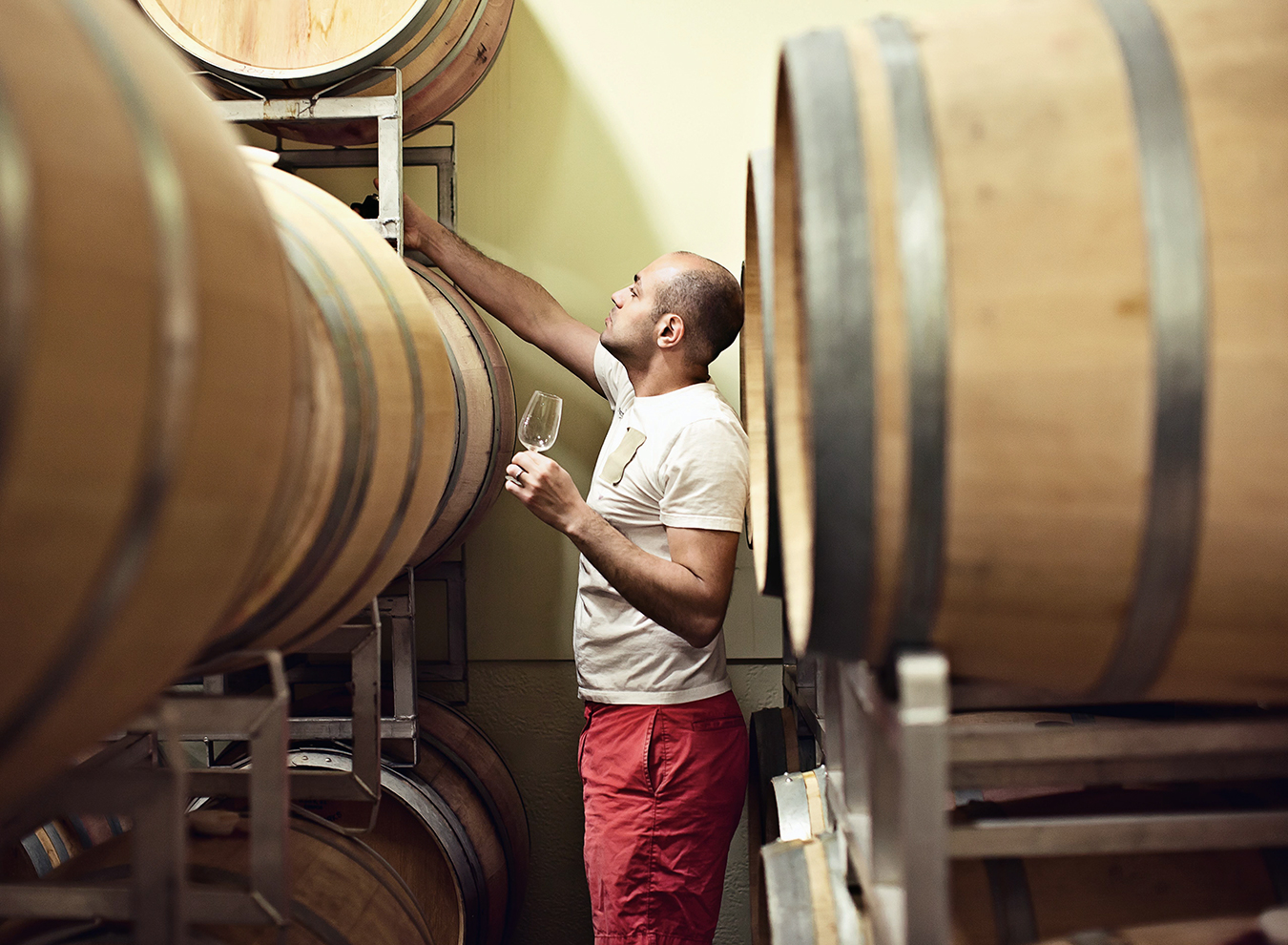
The Jancis Robinson x Richard Brendon collection is a one-size-and-shape-fits-all wine glass that is classically rounded so as to encourage the aroma upwards regardless of the fill level. Wine glasses courtesy of Richard Brendon.
How Many Wine Glasses Do You Really Need?
The myth of the wine glass.
In 2018, famed English wine author Jancis Robinson challenged the prevailing orthodoxy that each style of wine or grape variety called for a specific wine glass. She introduced a single glass she said was suitable for all wines: red, white, rosé, and orange, still and sparkling, dry, sweet, and fortified. As challenges to orthodoxy go, Jancis Robinson’s wasn’t as earthshaking as Martin Luther’s to the Catholic Church. But it rattled the glassware in the cupboards of wine lovers around the world.
These cupboards are often crammed with wine glasses of all sizes and shapes: tall, elegant flutes for sparkling wine; fat, bulbous glasses for pinot noir; smaller glasses for white wine; yet smaller glasses for sherry and port. Many cupboards include glasses dedicated to syrah, chardonnay, merlot, riesling, and scores of other varieties.
Such arrays reflect the thinking that each style of wine or grape variety demands its own glass if it is to be appreciated fully. This belief was most clearly stated 25 years ago by Riedel, an Austrian glassware company, which began to hold demonstration tastings for wine writers, sommeliers, and consumers around the world. Participants tasted the same wine in various Riedel glasses—varied in the shape and size of the bowl and the length of the stem—and noted the difference each glass made to how the wine tasted.
Riedel’s wine glass campaign was part of a movement to make everything about wine more precise, more scientific. From the 1970s, wines were no longer simply excellent or good but were rated out of 100. They were no longer delicious or full of character but were endowed with precise flavours of fruit, spices, and even stones. It was only logical that each wine should have its own glass.
The Riedel website currently lists glasses for some 100 grape varieties from A (aglianico) to Z (zweigelt), wine styles (such as unoaked and oaked chardonnay), and even appellations (including Chambolle-Musigny and Pomerol). Some glasses, to be sure, do double- or triple-duty, such as the one said to be ideal for pinot noir, nebbiolo, and rosé champagne.
Piggybacking on Riedel’s success, other glassware producers such as Ravenscroft, Spiegelau, Zalto, and Schott Zwiesel created their own variety- and style-specific wine glasses. Consumers now have a perplexing array to choose from and, unless they only ever drink two or three kinds of wine, must fear being unable to appreciate many wines because they are in the wrong glass.
Over the years, critics of Riedel’s wine glasses have challenged the assumptions behind them. The glasses were said to direct wine to specific parts of the tongue that were especially sensitive to sensations such as saltiness and sweetness. But this “geography of the tongue” has been debunked. Even so, the notion that certain glasses enhance our enjoyment of specific wines has wide support among wine professionals. At the same time, the one-glass principle has been accepted for years in practice: judges in wine competitions around the world use a single glass to taste hundreds of different wines without any suggestion that the glass might favour some wines and disadvantage others.
Jancis Robinson says she participated in one of Riedel’s demonstrations, which “usually showed that a particular Riedel glass was preferred for the relevant wine type by a very small margin.” But, she says, “I’m a pragmatist, and that margin never seemed enough to justify having a different glass for each style or variety—from the point of view of neither space nor cost. And it can be extremely difficult to tell one sort of Riedel glass from another.”
When she was approached by English designer Richard Brendon to collaborate on a range of wine glasses, Robinson told him she wanted to make a one-size-and-shape-fits-all glass: one with a good-sized bowl and a shape that was “classically rounded so as to encourage the aroma upwards regardless of the fill level.”
In doing so, Robinson has bucked a long-established trend. For centuries, for example, champagne has been served in special glasses. In the 18th century, they were tall and widened at the mouth. Later they were broad, shallow coupes. Then they were slender flutes that narrowed at the mouth. Recently, it has become the norm to serve champagne in the same glasses used for still wines. And there has long been a sense that red wines should be served in bigger glasses than white, and that port and sherry should be in small glasses. But Riedel exploded the range and produced much more precisely shaped glasses: no longer just bigger and smaller.
The sheer proliferation of wine glasses, each dedicated to a specific variety or style, has itself probably been the undoing of that approach to glasses. How many wine glasses do you really need? The short and simple answer: one.




